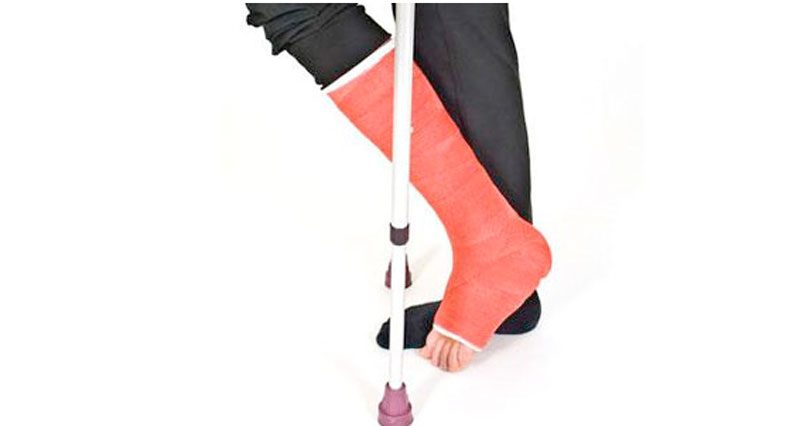Plaster Casts are used in the treatment of fractures (broken bones). Their purpose is to immobilise the body part to allow the two parts of the bone to heal in the correct position.
What is a Plaster Cast?
- A plaster cast consists of a cotton bandage which is covered in plaster of Paris.
- The bandages are applied when wet and harden as they dry. Often different coloured bandages are offered to the patient, especially to children.
How is a Cast Applied?
Firstly a stockinette is applied to the skin to protect it from the casting materials. Then a layer of cast padding is rolled on to further protect the skin.
The plaster bandages are then rolled on whilst they are still wet. The cast will usually start to harden within 10-15 minutes, although it takes much longer to fully dry out. It is important to be really careful with a cast for the first 24-48 hours until it is completely dry and hard.
Cast Care
There are certain things that need to be done to protect the cast and make sure it lasts as long as it is necessary.
- By far the most important thing is to keep the cast completely dry! Cast covers can be purchased for use whilst bathing. Generally, it is recommended to bath rather than shower and hang the casted limb over the edge.
- Do not lean or put weight on the cast as this may cause it to break.
- Do not put anything down the cast, including trying to itch the skin beneath it. This could damage the inside of the cast or the skin which could lead to infection.
How Long Does a Cast Stay on For?
In general, plaster casts are applied for between 6 and 8 weeks, although it can be more or less depending on the severity and location of the fracture.
How is a Fracture Cast Removed?
The cast is removed using a cast saw and another specialised tool. The cast saw is designed to cut the cast, but not the skin underneath. After the cast has been cut, usually along both sides, the tool is then used to spread and list the cast-off. The stockinette and cast padding is then cut off.
After the Cast is Removed
Once the cast is removed you may notice that the body part which was casted looks different to the other side. It may appear smaller and paler and the hair growth may also be different. This is all quite normal and is due to muscle wasting and a lack of sunlight to the skin. The colour and hair growth will slowly return to normal.
Muscle wasting occurs because the body part has been immobilised and so the muscles have not been working. A rehabilitation programme should be prescribed for you to help regain muscle strength and size.








